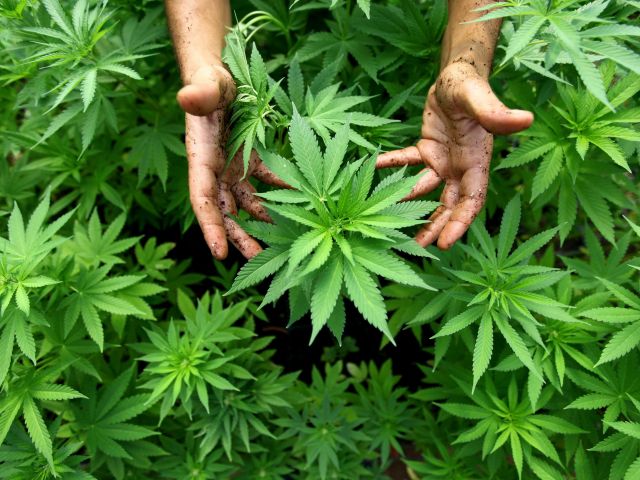Nature Watch: Cannabis is one of the world’s oldest cultivated plants
- Details
- Category: News Articles
- Published on Monday, 09 June 2014 22:10
- Written by Sheree Krider
- Hits: 2358
The cannabis or hemp plant is the source of the drug marijuana, often colloquially referred to as hashish, hash or weed. It is an annual herb.
Although there are several varieties, the most sought-after form, Cannabis sativa, grows from 8 to 12 feet high. Its opposite leaves extending from a central upright stem have five to nine (occasionally even up to 13) long, thin serrated fingers whose many veins make them appear fern-like.
I have seen only one cannabis plant. It grew in a neighborhood garden where it flourished until authorities removed it. Some people claim that cannabis could be confused with Japanese maple, but the two appear very different to me.
Originally from central and south Asia, cannabis has an interesting history. It is, in fact, one of the oldest cultivated plants, with records in China dating beyond 4000 BCE.
In 1619, England’s King James I ordered every Virginia colonist to grow 100 cannabis plants specifically for export. Later, George Washington grew it as one of his three primary crops. But those plants were not raised for recreational use. Hemp was widely used for cordage – rope making – for sailing ships. It is estimated, for example, that 65 tons of hemp were used in the rope lines, sails and caulking of the USS Constitution, our oldest Navy ship.
In addition to its use as cordage, hemp has served as a source for vegetable and seed oils for food and for fuel. In the early 19th century, it was a basic ingredient of many patent medicines. It was so widely used that one 1930s estimate projected that it would become “a billion dollar crop.” But by then opposition based on its recreational use had mounted, reportedly fomented by competing industries. The attack phrase was “marijuana madness” and a heavy tax was imposed in 1937, spelling an end to this growth industry. Legal proscription soon followed.
Under the federal Controlled Substances Act, marijuana is treated like cocaine and heroin, and is classified as a Schedule I drug, which means the federal government views it as highly addictive and having no medical value. This places doctors in an odd position. They may not “prescribe” marijuana for medical use under federal law, though they can “recommend” its use under the First Amendment.
But today regional laws are running counter to this federal interdiction. Recently, Colorado and Washington legalized marijuana for recreational use while 20 other states and the District of Columbia have legalized it for medicinal purposes.
Whatever the arguments for or against legalization, it appears to be the wave of the future. And it will apply to growing cannabis plants as well as preparing and distributing the drug marijuana.
Which raises an interesting issue that had not occurred to me until I read a paper by Nicholas Rising that appeared recently in the University of Denver Water Law Review. (That author’s name is not a coincidence: Nick is my grandson.) “Don’t Forget to Water the Weeds” details the remarkable amount of water necessary to grow this crop. Each plant requires up to 15 gallons per day. Compare this with less than a half-gallon per day to grow a square foot of potatoes.
Because of the striking difference in the selling price of the two crops, cannabis growers can expect a return of more than $6 per gallon of water invested, while potatoes return less than 3 cents per gallon. Arithmetic like that will prove attractive to farmers and indoor growers. We might expect to see potato fields turned over to cannabis just as we have seen wheat fields turned over to corn to produce ethanol.
But water is a premium resource, especially in the West, where most communities are currently beset by drought. Imagine how you would react to anyone allowed to grow cannabis if you were a suburban resident not allowed by local edict to water your parched lawn. Breaking bad, indeed.
email: This email address is being protected from spambots. You need JavaScript enabled to view it.









